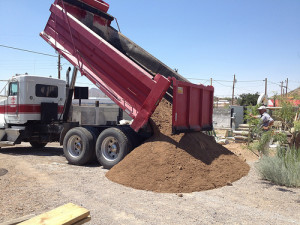Whats’ it all about? Different techniques for valuing stock and the Direct Materials used when the price of the material changes up and/or down regularly.
P.S. It’s not about Stock Rotation.
Why do you need to know about this? Knowing these techniques will help you in practice come up with methods for accurately pricing the stock you are selling if you use a material where the price changes a lot (perhaps you use a commodity like a foodstuff, coffee etc. or you use a raw material such as copper, gold etc. or a processed material that fluctuates a lot like petrol).
It’s also very popular with examiners, so if it’s in your syllabus….
AVCO – a method that uses a weighted average to calculate the cost of the units that you are using (stands for Average Cost).
The average cost will change as prices of new receipts change. As prices rise the average cost will rise too, but lag behind. As prices fall, the average cost will fall too but lag behind. Closing stock values reflect the average of the most recent receipts.
FIFO – a method that uses the values of the first units receive first, so oldest costs first (stands for First In First Out).
If prices are rising, we will be issuing at lower than replacement cost and closing stocks will reflect the more recent higher costs. If prices are falling, we will be issuing at higher than replacement cost and closing stocks will reflect the later lower costs.
LIFO – a method that uses the values of the most recently received units first, so newest costs first (stands for Last In First Out).
If prices are rising we will be issuing at the newer higher prices and the closing stock is likely to reflect earlier lower costs. If prices are falling we will be issuing at the newer, lower costs and the closing stock is likely to reflect earlier higher costs.
LILO – an inflatable airbed you can play on in the sea.
It is not about stock rotation, just to repeat myself.

Whether we are using the three methods or not, we will practice stock rotation if the product is something likely to go off or become unusable in some way.
It would be stupid to end up wasting the earliest to arrive just because we were using LIFO.
Most things don’t become unusable in the timescales we are talking about.
If they did, we would be obviously buying too many and that’s a different stock management issue.
We will almost certainly use the nearest first. When you go into the stock room you will take the box of components you need that is nearest to the door, not the one that was received first and might be in the far corner.
We do need to keep a record of the theoretical us though, depending upon which method we are using. So if we were using FIFO, we would take them from the box nearest the door, but record it as having come from the box in the far corner. it is keeping that tally correct that makes FIFO and LIFO difficult (and fun for examiners to set).
You will have seen piles of sand outside people’s houses when they are having work done.
If we are using FIFO, we would cost the sand used first a the cost of the first delivery.
But when you get a second delivery (then third and so on), the extra sand is on top of the first delivery.
You can still use FIFO as a costing method, even though you have no choice but take the sand from the top – that is the latest delivery.
So, it doesn’t really matter what order you sue it in as long as you keep a tally of what you have theoretically used .
I’ll show you how you do this in this demonstration question.
Demonstration of a calculation.
Read This.
This is what Stock Rotation is about: https://en.wikipedia.org/wiki/Stock_rotation. It’s not a management accounting technique, it’s good business practice if you a have any product that has a shelf life.
Pricing and Stock Costing – AVCO
Retailers are accused of overcharging but explain that their costs are based on an…
Posted by Management Accounting Info on Saturday, 18 December 2021
Watch this.
(Remember, videos like these that are produced to cover whole topics may include material that isn’t relevant to your own exam at your institution. don’t get hung up on it)
This video shows how it is used in the context of a Stores Ledger account. This si ‘Old School’, I am not sure whether this is how you would see it done in practice where you work. It’s unlikely in my view that you would be asked to do it in this way in a degree or professional exam, but it might be done this way in a book-keeping exam.
A worked example here for you to do too.
As with all stock management systems, you do need to know what you have in stock and check it regularly.
That way you can make sure that you have what you think you have.
Your actual stock can be different from what you have in your records for a number of reasons. Recording error, theft, unrecorded use/loss through damage, unnoticed shortages in delivery etc.
Most organisations count what they have got at regular intervals.
Possible Written Questions.
(No indication of marks – the more marks a question gets, the more you are expected to write – detail that is, not just words!) If you can’t answer these, you need to do some more reading. I do ‘find’ questions elsewhere, so these aren’t all questions I have used myself.
The likelihood is that you will get calculation questions on these, but written questions are possible.
Discuss the implications for the costs of issues when the prices of receipts are rising (falling) under the AVCO, FIFO, LIFO methods.

![DSC_0440[1]](http://www.managementaccounting.info/wp-content/uploads/2015/09/DSC_04401-e1442839004368-169x300.jpg)

